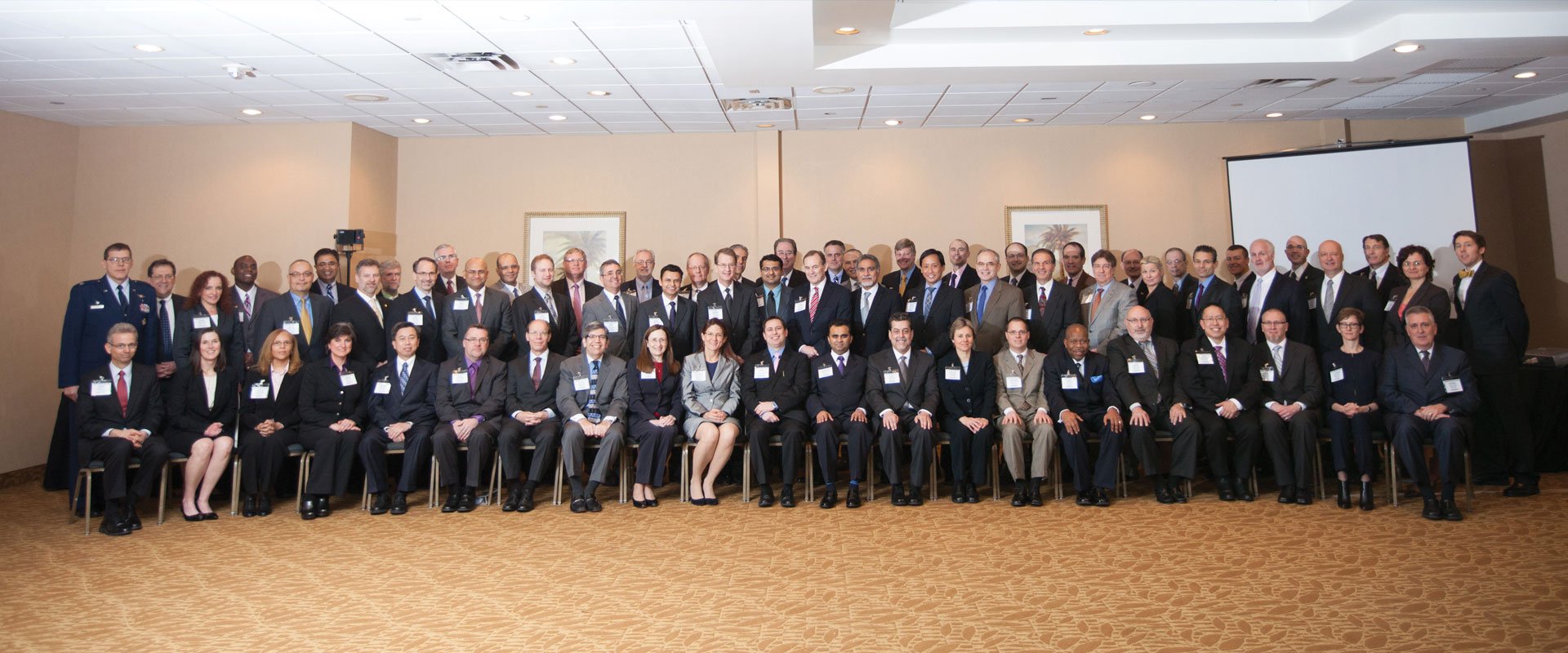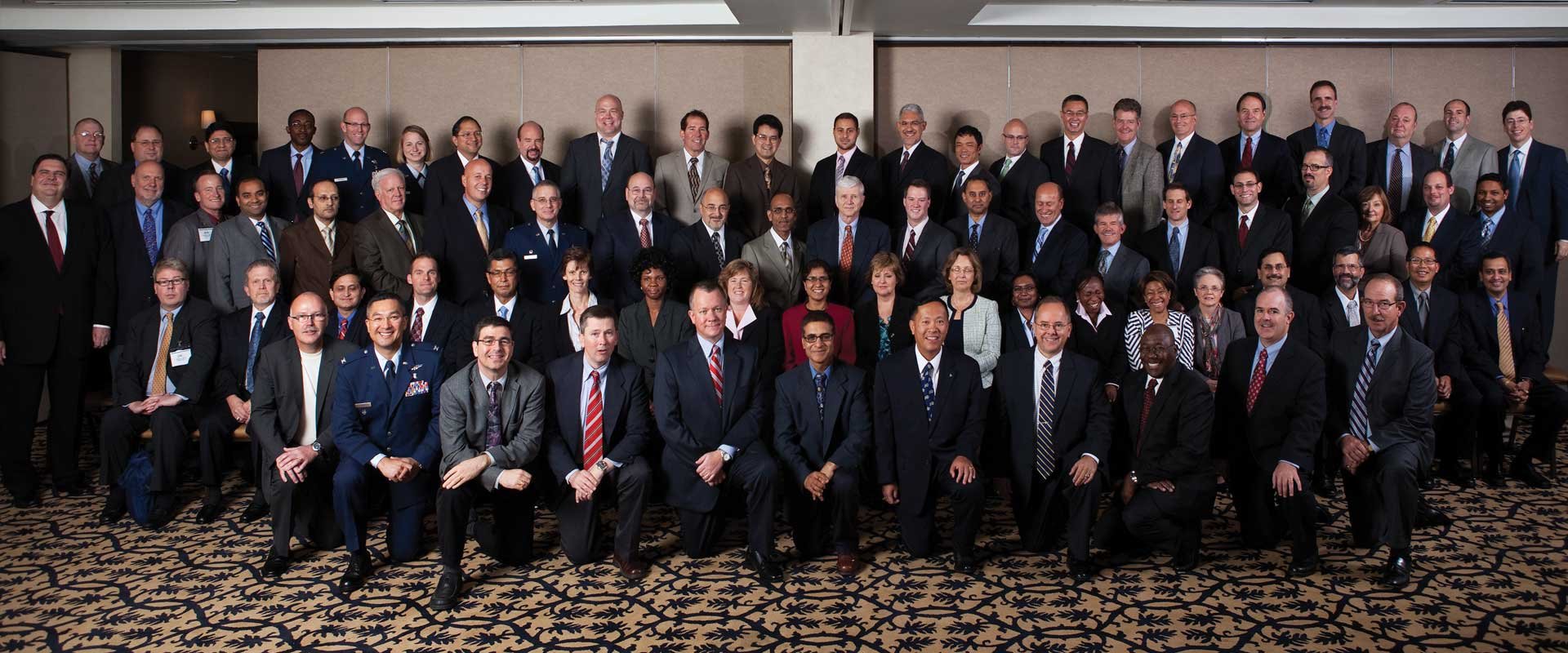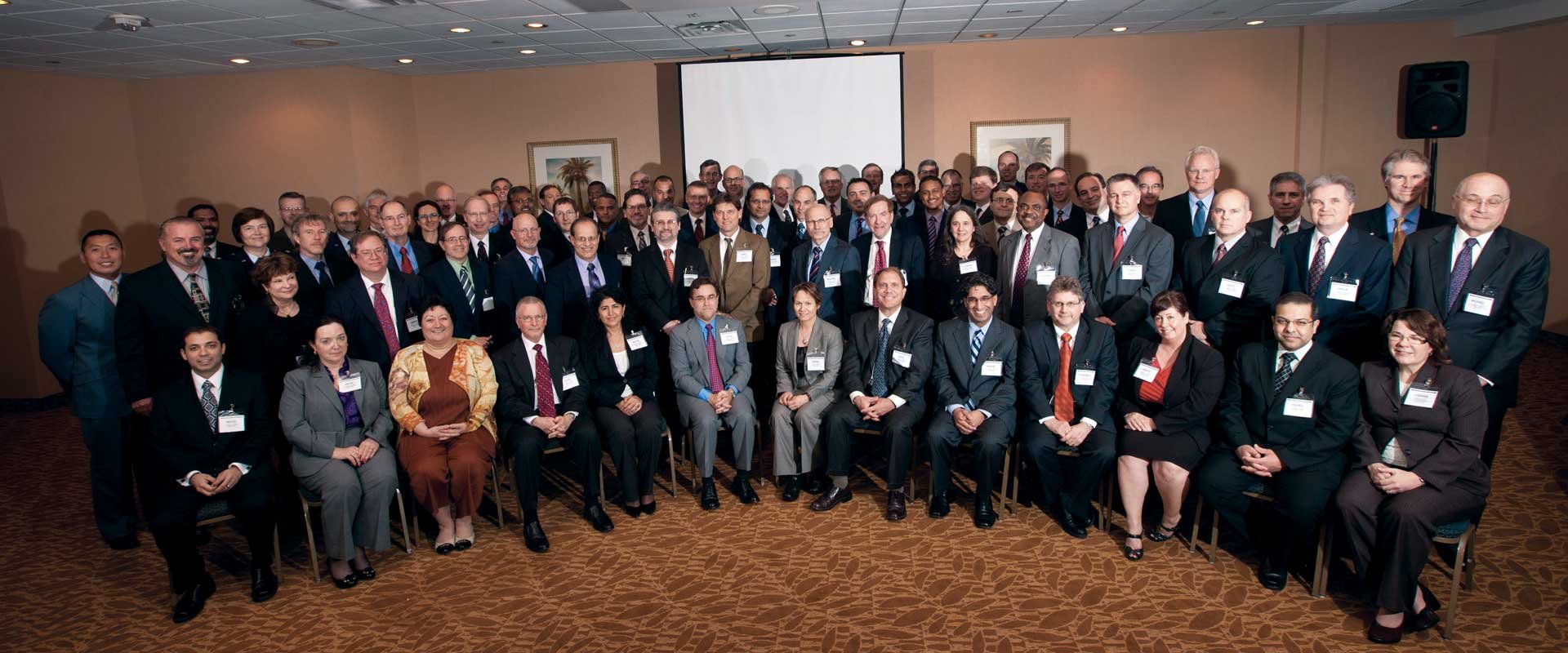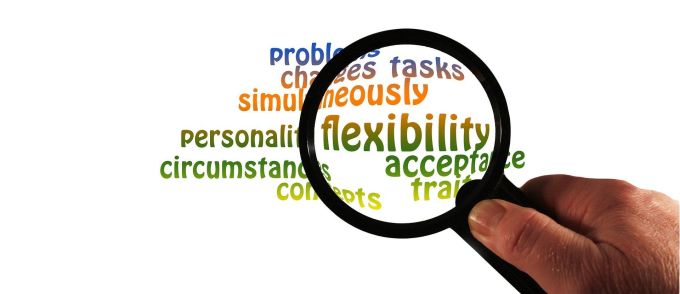
By AAPL Staff
It began, as so many important things often do, at the intersection of personal interest and professional ambition.
Consider, for example, the story of Grace Terrell, a physician leader who, in 1995, helped form and serve on the board of directors for North Carolina-based Cornerstone Health Care. At the time, it was a multispecialty organization of 42 physicians in 16 practices. Five years later, she was the CEO of the rapidly expanding organization.
While the practice was growing, “we realized very quickly we needed some business expertise,” she recalls.
As a member of the organization that eventually became the American Association for Physician Leadership, Terrell had taken educational courses and later got a master’s degree in medical management through one of its partner universities. But there was more she wanted to do.
“At that point in my career, I had been a leader for a while,” she says. “I had a lot of experience, and a lot of focus on the fundamentals.” But, she adds, there’s more to leadership than just having a title. “A lot of leaders just plunge forward and are not particularly self-aware,” she says. “I think that this is a trait, early on in my leadership roles, that was true of me as well.”

So Terrell, like thousands of physician leaders around the world, decided to do something about it. And the opportunity was easy to find.
In the mid-1990s, the association began seeking to answer a rising demand for a formal certification program for physician leaders. As a result, it created a program that would recognize them for their leadership skills and accomplishments in health care, while also orienting them to the expectations of formal leadership roles. The Certified Physician Executive certification debuted in 1997, with the goal of helping physicians achieve their personal and professional goals and maximize their leadership potential to influence health care.
This year marks the 20th anniversary of the first full “graduating class.” And after two decades, that three-letter credential has become the benchmark designation for leaders who are best equipped to lead and drive sustainable change in the increasingly complex health care industry.

"CPE might seem like another set of letters, but I learned how to identify my leadership strengths, and [the exercises] stick with me today."
Barbara Loeb, MD, MBA, CPE
MORE CPE VIDEO TESTMONIALS
Nearly 3,000 physician leaders have earned CPE certification, and it has helped open doors in today’s highly competitive job market as health care organizations increasingly bring physicians into the C-suite to provide the medical perspective that their business leaders just don’t have in this era of value-based care.
The credential entered general public awareness with the 2015 movie Concussion, which spotlighted research by Bennet Omalu, MD, CPE, into brain injuries suffered by football players. In one of the opening scenes of the movie, actor Will Smith, portraying Omalu, is testifying as an expert witness at a trial. As he is asked about his credentials, he tells the courtroom he is a “CPE — Certified Physician Executive.”
Omalu earned his CPE in 2011 and told the Physician Leadership Journal in 2016 that the most important physician leadership skills he has acquired are communication and the ability to recognize the humanity in all people.
For her part, Terrell, who achieved CPE status in 2006, last year became CEO of Envision Genomics, an organization that helps clinicians diagnose rare diseases by integrating data with care. That move came after a long leadership tenure with Cornerstone, which employs 275 physicians at more than 80 locations today.
“It provided a knowledge base, plus the leadership soft skills, to make me more effective,” Terrell says of the CPE program. It gives physician leaders a mindset “that allows them to see a bigger vision of what they need to accomplish and the skills to execute it.”
Creating new opportunities for physician leaders has been a principle since the program’s inception. While clinicians with leadership potential usually have thorough technical skills, and might even take leadership courses, moving into (and working within) the C-suite requires a different knowledge base. Many have difficulty making the transition.
The CPE program provides the essential polish for physician leaders — ultimately giving credibility to their abilities, and making them more attractive to organizations and executive recruiters seeking accomplished and influential job candidates. Certification tells prospective employers that a candidate has:
Together, they add up to a better chance of success for job candidates, says Jennifer R. Grebenschikoff, a health care leadership recruiter for more than 30 years. “Along with leadership and management accomplishments, the CPE on physician executives’ résumés tells me I can be confident that the candidates will present themselves well, know how to handle stressful situations and have good communication skills,” she says.

That was a key factor in creating the certification, says Bob Hodge, MD, CPE, FAAPL, FACP, chairman of the board of directors of the Certifying Commission in Medical Management, a nonprofit organization chartered by AAPL to establish and maintain certification standards. Hodge, an association member since 1978, says that as physicians earnestly began pursuing leadership jobs in the 1990s, some struggled to convey their abilities to lead.
The 20th anniversary of the Certified Physician Executive program will be celebrated during the 2018 Physician Leadership Summit, April 26-30 in Boston.
AAPL welcomes CPEs, distinguished physicians and others interested in or currently on the credential path to join the festivities at the Sheraton Boston Hotel.
The celebration is part of a larger gathering in which hundreds of physicians will attend peer-led learning labs, learn about solutions to industry issues, network and more. Also, the newest set of physicians will complete the CPE capstone, the final step in the credentialing process.
Click here to learn more about the Summit or to register.
“They seemed to have the skills, but how they actually presented those skills, in terms of what their competencies were, and their ability to take on leadership roles, was really needed,” Hodge says, noting that CPE certification doesn’t involve a final exam but instead calls upon participants to create an evaluated, formal presentation that showcases the totality of their skills.
“It [certification] really maintains the principle of having physicians communicate effectively, and gain the skills that will make them leaders in their organization or workplace, and a way they can show they’re able to meet the changing challenges of health care.”
Barbara Linney helped develop and administer the CPE program during her 22-year tenure with the American College of Physician Executives, the predecessor of the AAPL. Linney, who retired in 2012 as vice president of career development, calls CPE certification the public manifestation of a lifetime of professional experience that combines education with leadership.
“When they come through the CPE, they put it all together,” Linney says. “They’ve had some experience to get there. They’ve gotten some education. And then they’re able to demonstrate they are very good at using what they’ve learned.”
Time has passed since the first cohort assembled, and as the AAPL has evolved, so has the CPE program. The culminating educational event, once called the “tutorial,” is now known as the “capstone.” It now lasts 3½ days instead of five, thanks to some reorganization and strengthening of the curriculum. And, to meet demand, there are now four capstone sessions a year.
But plenty remains bedrock-steady. During interviews with some of the program’s past participants, four common themes emerged about CPE certification over the years.

Didn’t Learn This in Med School
Ron Nutting, MD, CPE, is the director of medical affairs for Reading Health System in Pennsylvania. He earned certification in 2016. “When I was a trainee and a medical student, we were kind of wired to think about taking care of patients, and the clinician was the captain of the ship. [But] modern care is really a team sport — far more collaborative. Leadership and the ability to influence others is a key element.”

“A lot of what a CPE knows is how to talk ‘administration.’ Most health systems and hospitals have no clue how to talk ‘doctor.’ … The CPE credential tells everyone you are prepared.”
Michael Torres, MD, MBA, CPE
MORE CPE VIDEO TESTMONIALS
Nutting’s son is following in his footsteps; he’s in medical school today. But Nutting has a piece of advice for aspiring physician leaders: “We need to be able to influence people,” he says, “and to influence them effectively, you need a different set of skills.”
The presentation skills Nutting developed in the CPE program recently proved to have a million-dollar payoff. In February 2017, he successfully persuaded his board of directors to free up nearly that much to acquire the technology and staffing necessary to upgrade his organization’s credentialing and privileging system.
Lifelong Professional Connections
Randy Bickle, DO, JD, CPE, FAAPL, has been president and medical director of a 600-physician organization in the Detroit, Michigan, metropolitan area since 2003. He says he began the certification process in 1997 and completed it in 2006, adding that his CPE colleagues have been an invaluable source of advice and ideas during his career.
“I still keep in touch with a number of them,” he says. “We have some with similar positions, and some that are different, but I keep close contact with three or four of them, especially — online and by phone on a regular basis. That’s a really great resource if I have questions I need answered, and vice versa.”

The path to Certified Physician Executive status is easy to navigate.
STEP 1: Complete the required Four-Phase Curriculum (150 CME hours) through AAPL, or have a relevant graduate management degree.
STEP 2: Must meet other eligibility requirements, including: holding an MD or DO license; having one year of management experience; being board-certified in a clinical specialty with three years’ experience.
STEP 3: Apply to attend a CPE capstone event and successfully complete it.
Held four times annually, the CPE capstone is a 3½-day series of live educational exercises, workshops and presentations. To receive certification, candidates must pass the evaluation of a panel that includes AAPL fellows, other current CPEs and assorted industry leaders.
Certification indicates a physician with professional stature, who has passed review in all disciplines of medical leadership, has demonstrated leadership experience, and has made a successful presentation of their skills and competencies.
CPE certification is managed by the Certifying Commission in Medical Management, a not-for-profit corporation chartered by the American Association for Physician Leadership. Click here for information.
Ability to Engage Knowledgeably
Coleen Stice, MD, FACS, CPE, got her certification in 2008 to ensure her voice would be heard in top-level discussions of health care. Stice, who practices plastic surgery in Nebraska among other entrepreneurial endeavors, saw an increasing emphasis on the process of medicine over outcomes and wanted to be able to remind other leaders about what’s best for patients.
“I have sat, all my practice life, on committees run by business people. They are, of course, responsible for keeping everything going — the lights on, the grass mowed, etc., and meeting all of the regulations — but they don’t have a physician voice,” she says. “They would use terms I didn’t understand, or principles of business that I didn’t fully grasp, so I thought it would be a good idea to learn about those things so I could be a more effective leader and add a physician’s voice to those meetings.”
Hope for the FutureMark Browne, MD, MMM, CPE, FAAP, FACPE, is the senior vice president and chief medical officer for Tennessee-based Covenant Health. He joined the association in 1998 and obtained his certification in 2007.
As with nearly every other CPE who spoke about their experiences, Browne believes effective leaders will be vital to the evolution of health care during the decades to come. He expects future CPEs — as well as today’s — will be able to use the principles of physician leadership for far-reaching results.
“I hope [future CPEs] will look beyond the immediate rewards of applying [their] skills” in the workplace, he says. “As you’re getting those skills, think about how you might use them in your community, how you might use them five or 10 years from now, how you might use them two or three jobs from now, how you might use them in your personal life. Think about their future value, not their current value” to be the best physician leader possible.
Compiled by AAPL Managing Editor Jason Davis with contributions from AAPL staff members Lesley Valentin, Chris Loscar and Jay Kelly.
***
Got a CPE story to tell? We might publish yours in an upcoming issue of the Physician Leadership Journal, as a video on our website, or as a podcast for download. Let us know by email at journal@physicianleaders.org.
More Articles From The Physician Leadership News

This article will discuss how to use “sacred time” in order to enhance efficiency in the practice. Doctors need to become more efficient in order to become more productive. One of the best ways to

We need to shift workplace cultures from one that protects and perpetuates sexism and misogyny to one that is notable for men as authentic allies. There are five ways to take back the term “good

There’s so much power in understanding what your values are — they can help you make decisions, guide your career, and even live a happier life. But how can you think about your values in an
Since 1975, the American Association for Physician Leadership has helped physicians develop their leadership skills through education, career development, thought leadership, and community building.
The American Association for Physician Leadership (AAPL) changed its name from the American College of Physician Executives (ACPE) in 2014. We may have changed our name, but we are the same organization that has been serving physician leaders since 1975.
Mail Processing Address
PO Box 96503 I BMB 97493
Washington, DC 20090-6503
Payment Remittance Address
PO Box 745725
Atlanta, GA 30374-5725
800-562-8088
813-287-8993 Fax
customerservice@physicianleaders.org
Start a new journey, find a career specific to physician leadership.
View Jobs